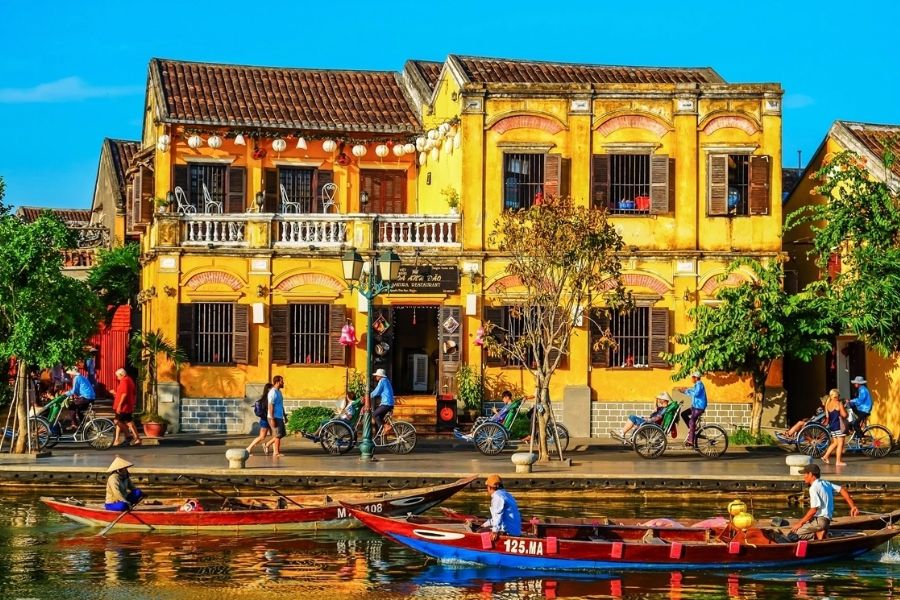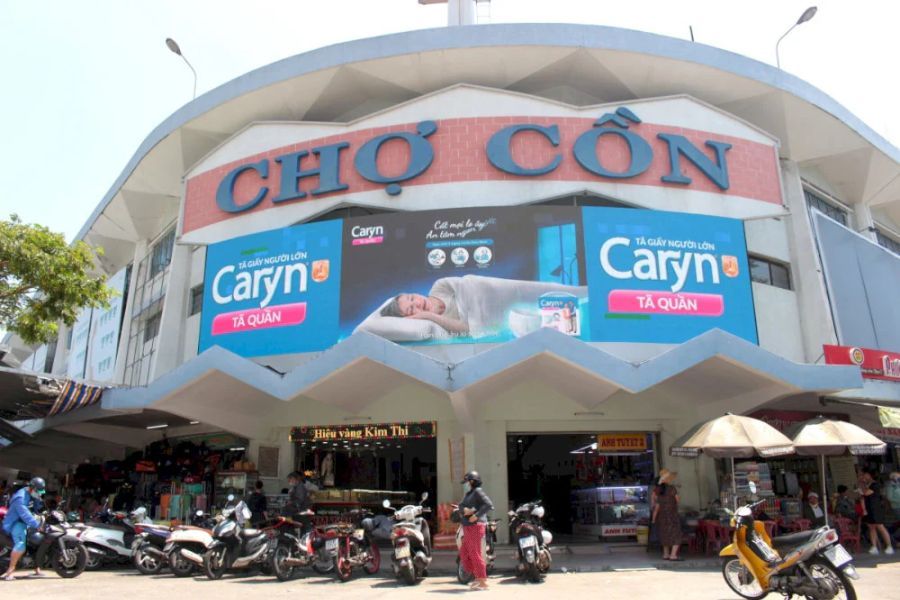Da Nang To Hoi An Key Details And How To Travel Between The Two
Traveling from Da Nang to Hoi An is a short but memorable experience. The route connects a dynamic seaside city with a historic riverside town, making it easy for travelers to enjoy both sides of central Vietnam in one trip.
Table of Contents
ToggleOverview Of Da Nang To Hoi An
Da Nang to Hoi An is one of the most popular short trips in Vietnam. The route combines a modern seaside city with an ancient riverside town, giving travelers two very different experiences in just one journey. Da Nang offers beaches, resorts, and vibrant city life. Hoi An highlights its cultural heritage through old streets, markets, and traditional houses, which together shape the classic things to do in Hoi An.

With only about 30 kilometers separating them, many visitors choose to explore both destinations in a single trip. Da Nang is often the base thanks to its airport, hotels, and lively entertainment, while Hoi An is a perfect stop for history, food, and a slower pace. The short travel time makes it easy to plan day trips or spend a few nights in each place without rushing. For most travelers, visiting both cities is not just convenient but the best way to experience the full charm of central Vietnam.
How Far Is It From Da Nang To Hoi An?
Traveling from Da Nang to Hoi An is a quick transport, considerably shorter than other trips between cities in Vietnam. The distance is approximately 30 km. Whether using a taxi, Grab, or a private car, one can expect a trip duration of 45 to 55 minutes, while a motorbike would take approximately 50 to 60 minutes. Shared minivans, buses, and public transport stop numerous times and take an estimated 70 to 80 minutes. The short travel time means that a majority of tourists opt to visit both places in a single itinerary to Hoi An.

There are multiple ways to get to and from the destinations. The coastal drive passes the Marble Mountains, numerous spas, and long beaches, which provide ample opportunity to stop and take pictures. The inland highway goes through smaller towns and rice paddies, offering a glimpse of the countryside to the people. Each way is simple to navigate, and each way provides a unique perspective of central Vietnam.
How to Travel From Da Nang To Hoi An?
The route from Hue to Da Nang is short but very scenic, taking you across the famous Hai Van Pass and along the central coastline. Depending on your budget and travel style, you can go by train, bus, private car, or even motorbike for a memorable ride.
By Motorbike
Using a motorbike to travel from Da Nang to Hoi An is popular among independent tourists, and it usually serves as the standout attraction for Da Nang’s necessary tourism. The coastal road and its adjacent route, Vo Nguyen Giap – Truong Sa – Lac Long Quan, are the most used paths. It takes approximately 50 to 60 minutes to complete. The route is uncomplicated, as the roads are level and signposted.

While it is the least expensive option and allows the traveler to set their own pace, it is not appropriate for all users. Small children, heavy baggage, and inexperience with Vietnamese roads make the trip more difficult. The ocean breeze and traffic on weekends are consistent problems. Therefore, good helmets, weather checks, and no late-night trips are recommended for safe trips.
| Aspect | Details |
| Route | The classic coastal route: Da Nang → Vo Nguyen Giap → Truong Sa → Lac Long Quan → Hoi An. This road is scenic, passing Marble Mountains and stretches of beach.
Alternative: Da Nang → National Highway 1A → Vinh Dien Town → Hoi An. Shorter and faster, but less scenic. |
| Distance | Da Nang to Hoi An distance is about 30 km in total. |
| Travel Time | 50 – 60 minutes depending on traffic. |
| Suggested Stops | Before heading out of Da Nang, Marble Mountains is an ideal place to climb the pagodas and the limestone caves.
Along the way, An Bang Beach is a good stop to unwind and have a drink by the sea. There are a few small cafés by the road on Lac Long Quan that are perfect for a quick stop before Hoi An. |
By Bus or Minivan
The safest and cheapest mode of transport is the bus that travels between Hoi An and Da Nang. Tourist minicabs are on the other hand, are faster and provide better service on the same route. The distance is approximately 30 kilometers, and the travel on average can take 60 to 80 minutes, depending on the mode of transport. The option is appropriate when someone is traveling alone and on a low budget, as there is no need to plan additionally.

A variety of transportation is available all day, including local buses, tourist buses, and even minivans in limousine style. Public buses have more stops during the ride and can get too crowded, though they are easy to navigate and rather reliable. The best idea is to book your place in advance, especially on weekends or national holidays, since the demand during this time is higher.
| Vehicle Type | Price (VND) | Travel Time | Notes & Tips |
| Public bus (Route 1) | Around 20,000 per person | 70 – 80 minutes | The bus departs every 20–30 minutes from Da Nang Central Bus Station and arrives at Hoi An Bus Station. It is the cheapest option but can be crowded during peak hours. |
| Tourist minivan | 100,000 – 150,000 | About 60 min | Most tourist minivans include hotel pick-up in Da Nang and drop-off in Hoi An center. They are quicker than public buses and comfortable for small groups. |
| Limousine minivan | 150,000 – 200,000 | About 60 min | Limousine vans provide spacious seating, air-conditioning, and fewer passengers. They are ideal for travelers who prefer more comfort without paying too much. |
By Private Car
A private car offers the highest comfort and flexibility when commuting from Da Nang to Hoi An. The distance is approximately 30 kilometers and normally takes 45 to 55 minutes to cover, depending on the congestion. The private car also gives travelers the option of a standard sedan, a bigger SUV, or even a luxury car, which makes it an ideal choice for individual travelers as well as families or groups. Also, this mode of private transportation is much quicker to use as there are no mandatory stops.

The price is higher than that of a motorbike or bus, but a private car offers privacy and door-to-door service. With a private car, there is no worry about luggage or dealing with traffic, making it the most convenient form of transportation for families with children or groups with heavy luggage. Taxis from Da Nang to Hoi An are plentiful, and the usual fare is approximately 350,000 to 400,000 VND. As for app-based rides, the Grab da Nang to Hoi An service indicates the price before confirming the booking.
| Vehicle Type | Price (VND) | Travel Time | Notes & Tips |
| Standard car (4 seats) | 300,000 – 350,000 one way | 45 – 55 minutes | A good choice for one to three travelers with light luggage. The ride is quick and offers a direct transfer to the Hoi An center. |
| SUV or MPV (7 seats) | 350,000 – 450,000 one way | 45 – 55 minutes | This option is suitable for small families or groups who want more space and comfort. Luggage capacity is also larger than a sedan. |
| Luxury car | 500,000 – 700,000 one way | 45 – 55 minutes | Premium vehicles provide modern features and professional service. They are ideal for travelers who want a more stylish and private trip. |
| Taxi or Grab | 350,000 – 400,000 one way | 45 – 55 minutes | Taxis are available at hotels, airports, and on city streets. Grab shows the price before booking and is usually convenient for quick rides. |
Self-Drive Car Rental
Users opting to rent cars benefit from the freedom of moving at their own pace. The trip from Da Nang to Hoi An spans about 30 kilometers, which, with proper signage, takes about 45 to 60 minutes. Renters can also make stops at the beaches or other tourist attractions, and car rental makes it easy to adjust itineraries on a whim.

This is recommended for tourists who know how to drive and follow the traffic system of Vietnam. It is, in fact, recommended against rental for short visits because of its deposit and rental requirements. International tourists need to have an International Driving Permit (IDP), and the insurance coverage needs to be verified. Compared to public transport, this option is pricier but offers enhanced privacy, safety, and convenience.
| Aspect | Details |
| Route | The most common route is Da Nang → Vo Nguyen Giap → Truong Sa → Lac Long Quan → Hoi An, which follows the coastline and is easy to navigate. Travelers can also take National Highway 1A through Vinh Dien Town if they prefer a shorter but less scenic ride. |
| Distance | A single trip from Da Nang to Hoi An is approximately 30 km, making it one of the shorter inter-city transport distances in central Vietnam. |
| Travel Time | Without any traffic to concern yourself with, the drive should take 45-60 minutes and may be a bit longer in the mornings and evenings, as well as on holidays and weekends. |
| Rental Price | Rental fees generally range from 700,000 to 1,000,000 VND per day (around 30 – 40 USD), and this price does not include fuel or insurance. |
| Fuel Cost | A complete round-trip Da Nang – Hoi An trip usually costs 100,000 to 150,000 VND, depending on the vehicle. |
| Best For | This option is best for families or groups who need a private car because it is more flexible, allows more luggage, and allows you to stop at sites along the way instead of cramming your visit into your time in Hoi An. |
| Notes | We recommend reserving your vehicle ahead of time on any weekend or holiday, carefully checking the insurance policy, and never disregarding local traffic conditions. |
Tips For Traveling From Da Nang To Hoi An
Though the trip from Da Nang to Hoi An is not long, it is better to do some preparation to ensure that the trip is hassle-free. The notes provided are per real experience and are aimed at improving comfort, safety, and saving time.
- On account of the high demand, buses and minivans are likely to be full on Fridays, Saturdays, and Sundays. This means that customers can enjoy peak prices, and the seats can be empty for them to use.
- Hotels in Da Nang have very relaxed policies when it comes to picking up tourists in tour and limousine minivans. Drop-offs, on the other hand, tend to stick to the well-known central areas in Hoi An, but the confirmation via WhatsApp and Zalo removes any ambiguity.

- For public buses, luggage restrictions are more rigid when it comes to stiff suitcases. Soft bags are a lot easier to fit either on top or under the seat and are easier to carry.
- During pedestrian-only times, vehicles are not permitted to enter Old Town, and keeping drop-off locations outside the heritage center, where a five- to 10-minute walk is required, helps reduce frustration.
- Non Nuoc/Marble Mountains areas have police checkpoints. To avoid fines, carry a license and rental papers, and observe the speed limits.
- Small banknotes (about 10,000 to 20,000 VND) are most convenient for handling cash for bus fares, parking, and roadside cafés, where electronic payments are not accepted.
- Airport arrivals face slightly higher grab/taxi prices than city pick-ups; moving into the city center before booking often trims the fare.
- Family travel tends to be easier with a private car or limousine minivan, since child seats can be pre-requested and door-to-door drop-off cuts walking in the heat.
Final Thoughts
Da Nang to Hoi An is a short hop that lets you enjoy two classic central Vietnam experiences in one itinerary. The best choice is the one that keeps your day simple and your plans flexible. For smooth logistics, Seni World can arrange transfers, secure seats, and time your trip around traffic and Old Town pedestrian hours. Contact Seni World to tailor a day trip or multi-night plan that fits your budget, pace, and interests.











